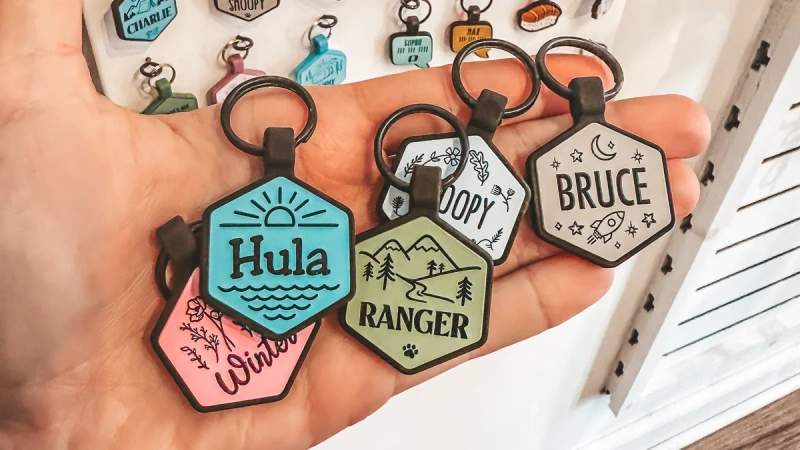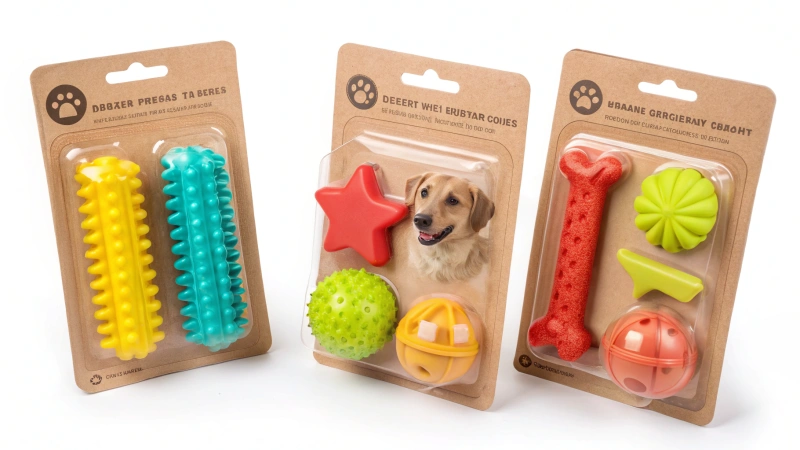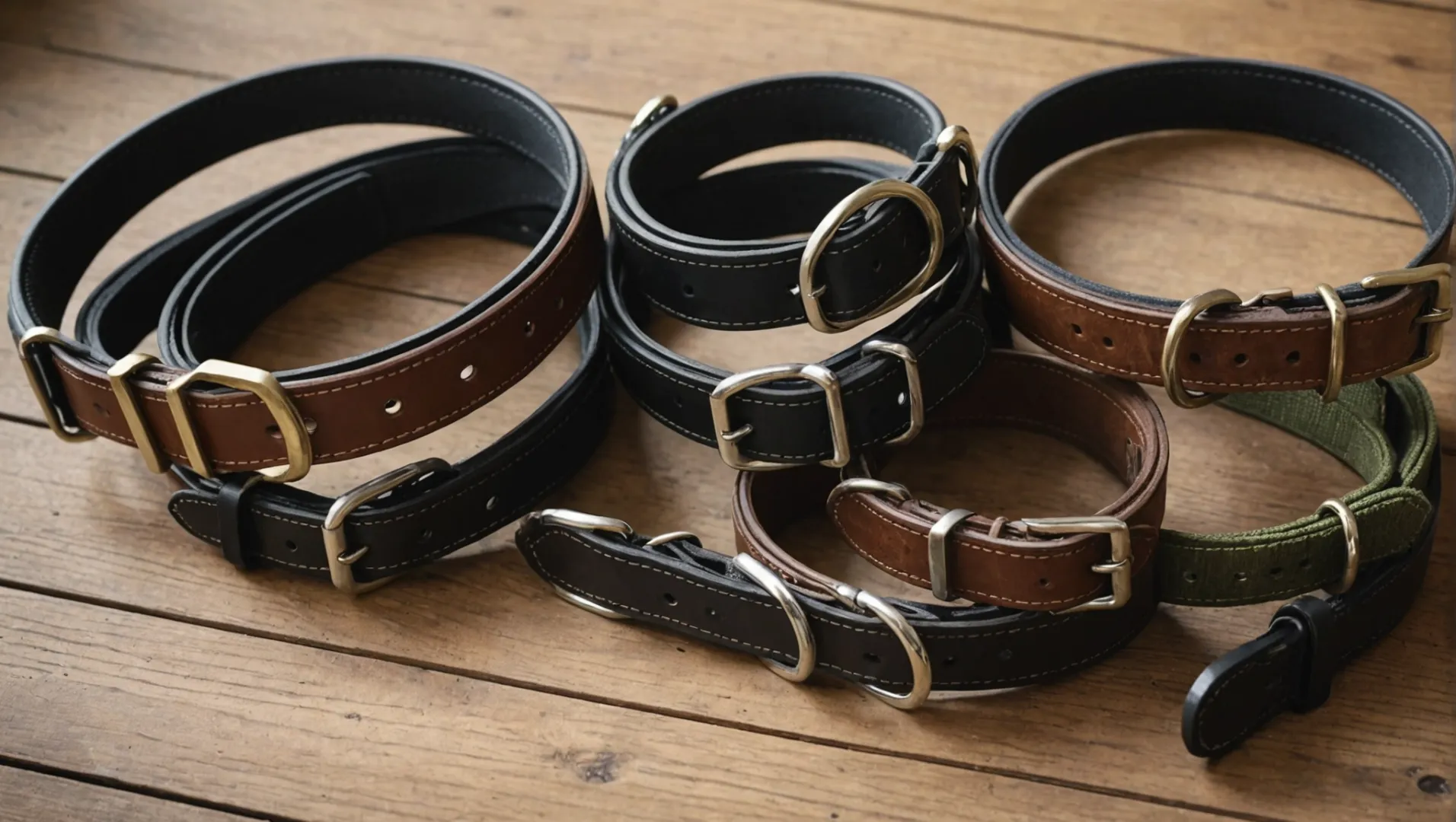
Finding the right collar for my furry friend was one of those moments that felt overwhelming yet so important.
The best material for a dog collar depends on factors like durability, comfort, and your dog’s specific needs. Leather, hemp, and neoprene are popular choices due to their hypoallergenic properties and breathability, making them ideal for different dog types.
In this comprehensive guide, I’ll take you through the characteristics of various materials. Together, we’ll help you make an informed decision tailored to your dog’s unique requirements.
Leather collars are best for dogs with sensitive skin.True
Leather is hypoallergenic and molds to the dog's neck, reducing irritation.
What Are the Benefits of Leather Dog Collars?
Leather dog collars offer a blend of durability, style, and comfort for your furry friend.
Leather dog collars are durable, hypoallergenic, and become more comfortable with age. They offer a classic aesthetic while providing strength and breathability, making them ideal for dogs with sensitive skin.
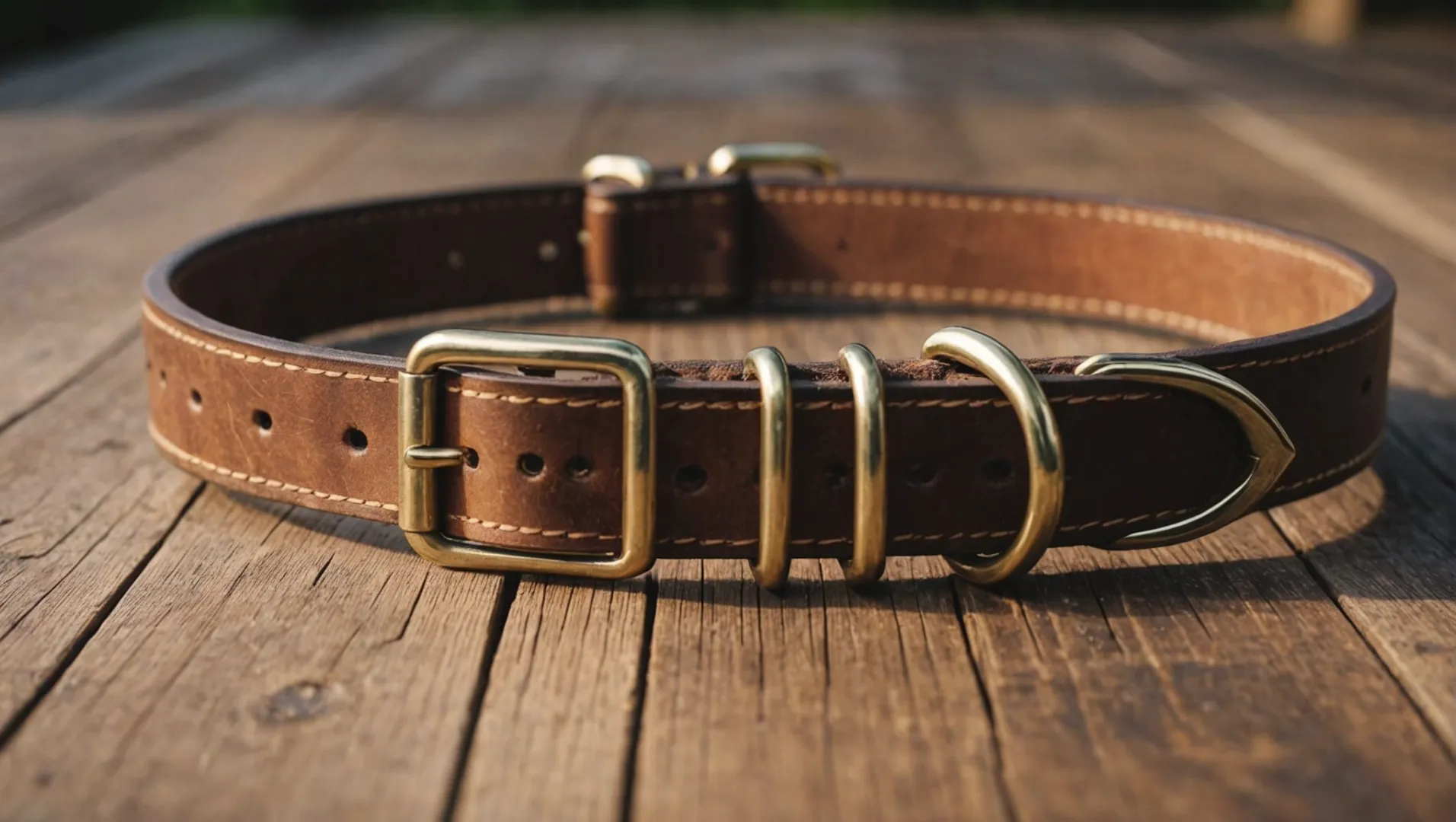
Durability and Longevity
One of the most significant benefits of leather dog collars1 is their durability. High-quality leather can withstand the wear and tear that comes with an active dog’s lifestyle. Unlike some synthetic materials that may fray or degrade over time, leather collars remain robust and intact, often lasting for years.
Comfort and Breathability
Leather is a natural material that is breathable and soft, providing superior comfort for dogs. It molds to the shape of the dog’s neck over time, enhancing its comfort. This adaptability makes leather collars particularly suitable for dogs with sensitive skin as they reduce the risk of irritation compared to some synthetic options.
Hypoallergenic Properties
For dogs prone to allergies or skin irritations, leather collars can be a wise choice. The natural properties of leather mean it’s less likely to cause allergic reactions compared to synthetic materials. This makes it a safer option for dogs with skin sensitivities.
Aesthetic Appeal
In addition to their practical benefits, leather dog collars are also known for their classic aesthetic appeal. They come in various styles and colors, from simple and understated to ornate designs with embellishments. This versatility allows pet owners to choose a collar that reflects their dog’s personality and their personal style.
Maintenance and Care
Proper care is essential to maintain a leather collar’s appearance and functionality. Regular cleaning and conditioning can prevent the leather from drying out and cracking, extending its lifespan. Pet owners should be aware of these maintenance requirements when considering a leather collar for their dog.
Comparison Table: Leather vs. Other Materials
| Feature | Leather | Neoprene | Hemp |
|---|---|---|---|
| Durability | High | Moderate | High |
| Hypoallergenic | Yes | Yes | Yes |
| Breathability | High | High | High |
| Maintenance Required | Moderate | Low | Low |
| Aesthetic Variety | High | Moderate | Low |
Choosing the right collar involves balancing aesthetics, comfort, durability, and specific needs of your dog.
Leather dog collars are hypoallergenic.True
Leather's natural properties reduce allergic reactions compared to synthetics.
Leather collars require no maintenance.False
Regular cleaning and conditioning are needed to prevent drying and cracking.
How Does Hemp Compare to Other Natural Materials?
Hemp is a rising star in eco-friendly materials, but how does it stack up against others?
Hemp stands out for its durability, breathability, and eco-friendliness, offering unique advantages over other natural materials like leather and organic cotton.
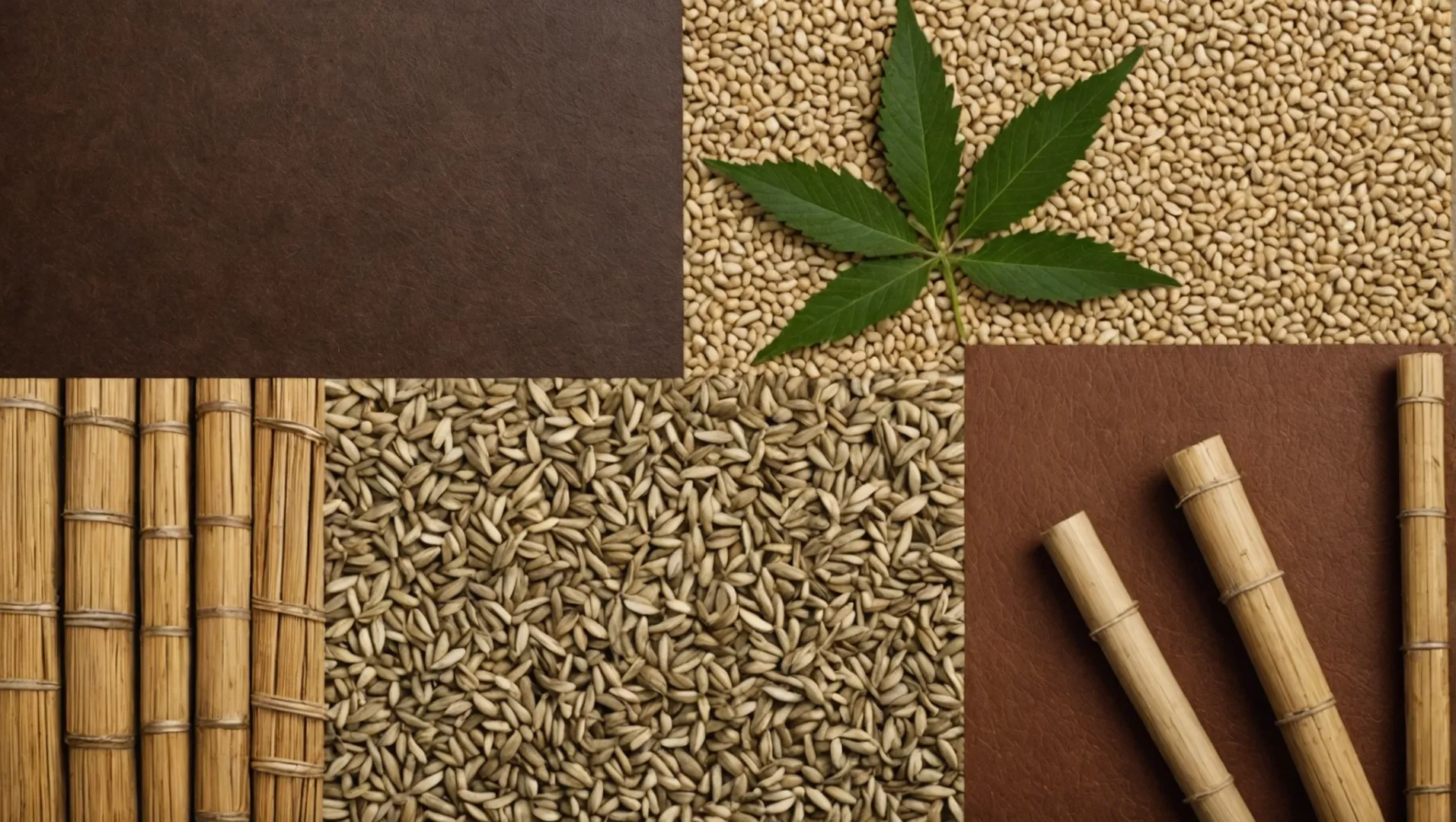
Durability and Longevity
Hemp is renowned for its robust nature, often touted as one of the most durable natural fibers available. It resists wear and tear much better than other natural materials such as organic cotton2, which, while soft and comfortable, may not withstand rough conditions as effectively. This makes hemp an excellent choice for products that require long-lasting materials.
Eco-Friendliness and Sustainability
A standout feature of hemp is its low environmental impact. Hemp cultivation requires minimal pesticides and fertilizers compared to leather production3, which involves significant resource use and potential environmental concerns. Additionally, hemp is biodegradable and has a low carbon footprint, aligning well with sustainable practices.
Comfort and Skin Sensitivity
When it comes to comfort, hemp is gentle on the skin, similar to bamboo4, which is praised for its softness and antimicrobial properties. Hemp’s natural breathability also helps in regulating temperature, making it ideal for sensitive skin prone to irritation. Unlike synthetic options, it maintains comfort without sacrificing ecological benefits.
| Material | Durability | Eco-Friendliness | Skin Sensitivity |
|---|---|---|---|
| Hemp | High | High | High |
| Organic Cotton | Medium | Medium | High |
| Leather | High | Low | High |
| Bamboo | Medium | High | High |
Versatility in Use
Hemp’s versatility extends beyond just dog collars. It’s widely used in clothing, accessories, and even home goods due to its strength and texture. This versatility sets it apart from materials like neoprene5, which is more niche due to its specific properties like water resistance.
In conclusion, while each material has its merits, hemp’s combination of strength, comfort, and environmental responsibility makes it a compelling choice among natural materials. However, it’s essential to consider your specific needs and preferences when making a selection.
Hemp is more durable than organic cotton.True
Hemp resists wear better, making it more durable than organic cotton.
Leather is more eco-friendly than hemp.False
Leather production has a higher environmental impact compared to hemp.
Is Neoprene Suitable for Dogs with Sensitive Skin?
For dogs with sensitive skin, choosing the right collar material is crucial to ensure comfort and prevent irritation.
Neoprene is suitable for dogs with sensitive skin due to its hypoallergenic and soft nature. It minimizes irritation while providing comfort and durability. This makes neoprene an excellent choice for dogs prone to skin issues.

Understanding Neoprene’s Hypoallergenic Properties
Neoprene, commonly used in wetsuits, is a synthetic rubber offering excellent elasticity and comfort. Its hypoallergenic properties make it ideal for dogs with sensitive skin, as it significantly reduces the risk of allergies and irritation.
Unlike some other materials that may cause rashes or discomfort, neoprene provides a soft cushioning effect against a dog’s neck. This makes it especially beneficial for breeds with shorter hair or those prone to dermatitis.
The Comfort Factor of Neoprene
Comfort is crucial when selecting a collar for dogs with sensitive skin. Neoprene’s lightweight6 and breathable nature ensures that it doesn’t trap heat or moisture, reducing the likelihood of chafing or overheating.
This synthetic material offers a smooth texture that prevents harsh rubbing against a dog’s neck, which is often a concern with more rigid materials like nylon or metal.
Durability and Maintenance
Apart from its comfort, neoprene is known for its durability7. It can withstand rough play and various weather conditions without compromising its integrity. This makes it a sustainable option for active dogs who enjoy outdoor adventures.
Maintaining neoprene is also hassle-free. It can be easily cleaned with mild soap and water, ensuring the collar remains hygienic and free from dirt that could cause further irritation to sensitive skin.
Comparing Neoprene with Other Materials
Here’s a quick comparison of neoprene with other common collar materials:
| Material | Hypoallergenic | Breathable | Durable | Maintenance |
|---|---|---|---|---|
| Neoprene | Yes | Yes | High | Easy |
| Leather | Yes | Moderate | High | Requires Care |
| Hemp | Yes | High | High | Easy |
| Nylon | No | Low | High | Moderate |
Choosing neoprene offers a balance of comfort, ease of maintenance, and hypoallergenic benefits, making it a standout choice for dogs with sensitive skin.
Neoprene is hypoallergenic for dogs.True
Neoprene's synthetic rubber composition minimizes allergy risks.
Nylon collars are more breathable than neoprene.False
Neoprene is more breathable, reducing heat and moisture buildup.
Which Materials Are Best for Active Dogs?
Active dogs require collars made from materials that ensure durability, comfort, and safety during play.
For active dogs, the best collar materials include leather, hemp, and neoprene due to their durability, breathability, and hypoallergenic properties. These materials offer comfort and withstand rigorous activities, making them ideal for dogs that love to explore.
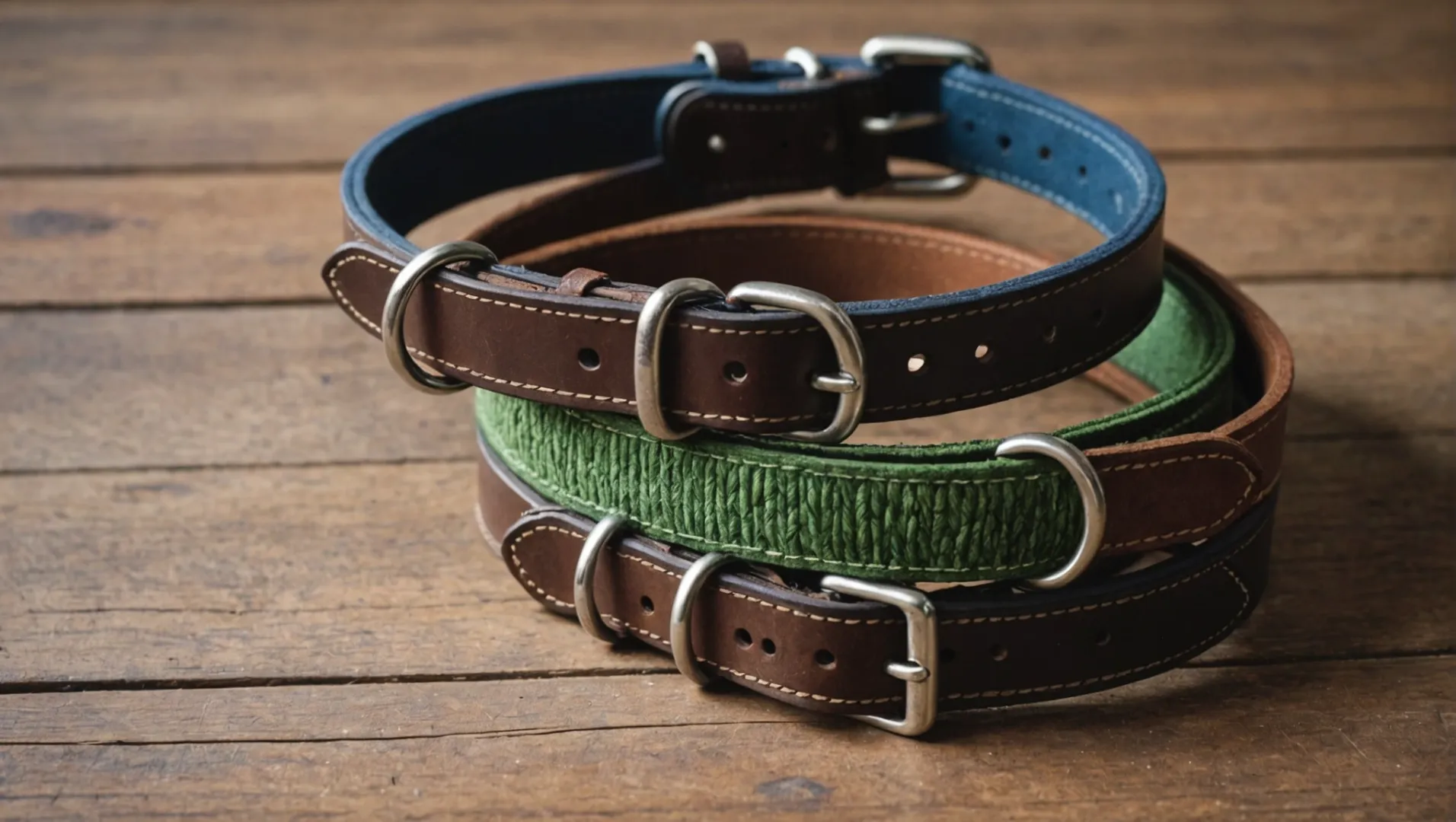
Durability and Comfort in Leather Collars
Leather is a time-tested material for dog collars, known for its strength and longevity. It becomes more comfortable over time, molding to your dog’s neck. However, proper maintenance8 is crucial to prevent drying or cracking.
Eco-Friendly and Gentle: Hemp Collars
Hemp is a natural fiber that stands out for its robustness and sustainability. It’s gentle on the skin and has a low environmental impact. Hemp’s biodegradability adds to its appeal, especially for eco-conscious pet owners.
Hypoallergenic Neoprene: A Modern Choice
Neoprene is a synthetic material often used in padded collars due to its lightweight and breathable nature. It is ideal for dogs with sensitive skin, as it reduces irritation risks. Neoprene’s ability to withstand water makes it perfect for active dogs who enjoy swimming.
Comparing Materials for Active Dogs
| Material | Durability | Breathability | Skin Sensitivity |
|---|---|---|---|
| Leather | High | Moderate | Low |
| Hemp | High | High | Very Low |
| Neoprene | Moderate | High | Very Low |
While leather offers classic durability, hemp provides an eco-friendly option with excellent breathability. Neoprene caters to sensitive-skinned dogs with its hypoallergenic features. Each material has unique benefits, so consider your dog’s activity level and skin needs when choosing a collar.
Leather collars are hypoallergenic for active dogs.False
Leather is durable but not hypoallergenic; neoprene is better for allergies.
Hemp collars are biodegradable and eco-friendly.True
Hemp is a natural fiber known for its biodegradability and low environmental impact.
Conclusion
Choosing the right collar material greatly enhances your dog’s comfort and safety. Take time to consider their individual needs as you make this important decision.
-
Explore further benefits and styles of leather dog collars.: These collars are comfortable, stylish, and durable, making them an easy choice when it comes to pampering your new best friend. dog wearing … ↩
-
Explore why organic cotton is favored for its comfort and skin-friendly qualities.: Better Longevity. Not only do organic cotton clothes, sheets, and other products help the environment, but they also last longer, too. That’s … ↩
-
Learn about the ecological concerns associated with traditional leather production.: The leather industry plays a significant part in the environmental damage caused by animal agriculture, such as land use, deforestation, and water pollution. ↩
-
Discover the unique properties that make bamboo fabric a popular choice for sensitive skin.: Not only is it softer than silk, making it one of the most comfortable materials you’ll ever wear, it’s also anti-bacterial, resistant to wrinkles, and has eco … ↩
-
Understand the specialized applications where neoprene shines due to its unique features.: A1:Neoprene is a waterproof synthetic rubber commonly used in wetsuits, gloves, and other applications. Its waterproofness may depend on thickness, quality, and … ↩
-
Discover how lightweight collars enhance comfort and reduce skin irritation.: 3 benefits of nylon collar for dogs nylon dog collars: · Ultimate Comfort · Variety · Perfect Sizing. ↩
-
Learn why neoprene collars are long-lasting and suitable for active dogs.: Like our original they still offer the best in comfort, style and durability. Soft rubber neoprene (the same material used in wetsuits) is reinforced with … ↩
-
Learn how to keep leather collars supple and crack-free.: Cleaning: Most leashes and collars don’t need heavy-duty cleaning unless they’re very dirty. If the item has heavy soiling or ground-in dirt, try Saddle Soap or … ↩


